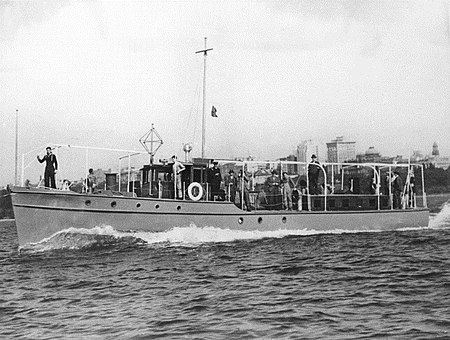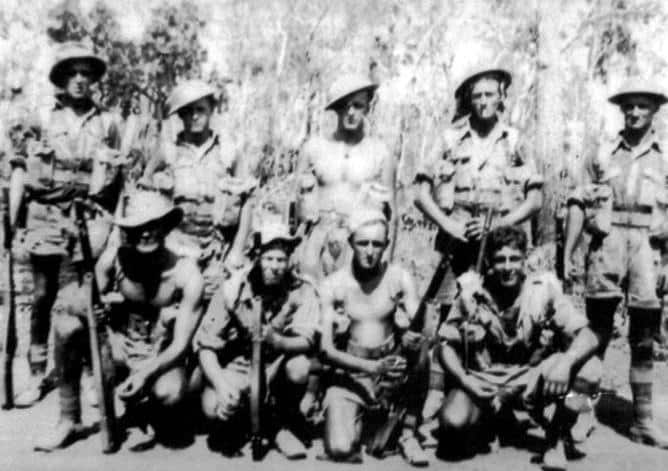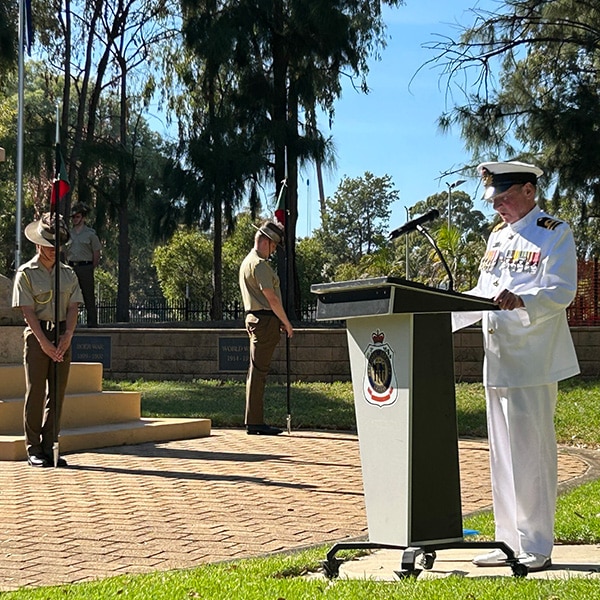(August 1942 to February 1943)

The Solomon Islands
The Solomon Islands archipelago covers an area of 249,000 sq. nautical miles of which 10,938 sq. miles is land mass. The six biggest islands are Choiseul, New Georgia, Santa Isabel, Guadalcanal, Malaita and Makira. In addition, there are hundreds of significantly smaller islands.
The largest island is Guadalcanal and its capital is Honiara.

Preamble
The Japanese knew that in order to occupy the SW Pacific and north-eastern Australia, they must dominate the air-space and the sea-lanes across this region. The island of Guadalcanal was of great strategic significance to them as was Port Moresby. By now – they were now already occupying New Britain and using the large deep-water harbor at Rabaul as their Fleet’s staging area.
Equally, both the US and Australia recognized they could not allow any interruption to Australia’s east-coast sea lanes as this could lead to Australia becoming isolated for the remainder of the War.
On July 2nd, 1942, the United States (US) Joint Chiefs of Staff ordered Allied forces in the Pacific to mount an offensive to halt the Japanese advance in the SW Pacific.
Interestingly, on July 6, Japanese Forces consisting of troops and labourers landed on Guadalcanal and began constructing an airfield.
This led to the long and bloody struggle for control of Guadalcanal and other neighbouring islands.
Operation WATCHTOWER, the occupation of Guadalcanal and Tulagi Islands, was the first offensive by the Allied Forces in the Pacific Theatre, and was the first US combined amphibious operation since 1898. The Royal Australian Navy (RAN) contributed significantly during the early stages of the Guadalcanal campaign.
The Naval campaign at Guadalcanal and the landing in the southern Solomons and the Battle of Savo Island
Rear Admiral Victor Crutchley RN, Commanding the Australian Squadron and Commander of Task Force 44, was in command of the screening force at Guadalcanal, which included HMA Ships Australia (II), Canberra (I) and Hobart (I).

Australian Squadron Commander
His task was to protect the amphibious transports and the troops ashore from Japanese attacks from the air, on, and beneath the sea. In addition, his ships were to bombard Japanese positions and provide fire support to the US Marines once they had landed ashore. A number of RAN Reserve Officers, who were familiar with the waters off the Solomon Islands due to their civilian employment as merchant service masters, were able to help pilot the Australian and US ships through the poorly charted waters.
Some of these Officers were also serving as coast-watchers.
On August 7, 1942, the heavy cruiser Australia commenced a pre-landing bombardment of Guadalcanal with her 8-inch guns. At 08:00 elements of the 1st US Marine Division, under Major General Vandergrift USMC, landed against strong Japanese opposition at Tulagi Island.
Just one hour later, at 09:10 the main strength of the 6,000 1st Marine Division landed unopposed at Beach Red on Guadalcanal surprising the 2,000 Japanese troops already in position on the island.
The Japanese were taken by complete surprise!
This first wave of marines to land on Guadalcanal were guided by two RANVR Officers from Commander Feldt’s Coast-watcher organization.
The air-field on Guadalcanal once seized (in the first 36 hours) was named Henderson Field after Maj. Lofton Henderson, a US Marine aviator who perished while leading a bombing run during the Battle of Midway, the previous month.
Henderson Field would quickly become centric to the conflict on Guadalcanal.

Throughout the landing operations, combat air patrols and ground support aircraft were provided by three US aircraft carriers located to the south of Guadalcanal and controlled using a fighter-director team stationed onboard the cruiser USS Chicago. Admiral Crutchley also had eight cruiser-borne aircraft engaged in a continuous anti-submarine patrol as well as liaison work.
The Headquarters of the Imperial Japanese Navy’s (IJN) Eighth Fleet in Rabaul had detected increased radio transmissions in the area, so they knew that the Allies were planning an operation in the area, but their interpretation was that there would be another US carrier raid in Papua. After receiving a signal from Tulagi at 06:30 on 7 August, the Japanese sent a force of medium bombers and fighters from Rabaul to attack the Allied Amphibious Force.
A preliminary warning was sent by Petty Officer (later Lieutenant) Paul Mason RANVR, a Coast-watcher on Bougainville, at 11:37: “Twenty-four bombers headed yours”. Consequently, the Japanese aircraft had to contend with both carrier-borne fighters vectored to intercept them and the anti-aircraft fire from Crutchley’s ship. At around 13:20, the high-level bombers managed to drop their bombs but did they not do any damage.

A second attack by Japanese dive bombers scored a hit on one of the destroyers, USS Mugford; however, five out of the nine aircraft were destroyed by the carrier-borne fighters and ships’ anti-aircraft fire.
The Japanese raids continued the following day.
Despite the Bougainville coast-watchers preliminary warning, a large force of twin engine ‘Betty’ torpedo bombers surprised the Allied fleet around noon, when they made their approach from the north east behind Florida Island.
Four Japanese planes were destroyed by fighters from the carrier USS Enterprise on patrol in the eastern Nggela Channel, while the screen’s anti-aircraft fire brought down another 13.
The destroyer USS Jervis was hit badly and had to leave the area, and nearby a burning Japanese plane crashed purposely into the transport USTS George F Elliot with deadly results.
The US carriers had helped to save the transports, but they lost 21 planes in just two days.
Their commander, Vice Admiral Fletcher USN, knew that he was commanding three out of only four US aircraft carriers in the Pacific. Fletcher signalled at 18:07 on August 8: “Total fighter strength reduced from 99 to 78. In view of large number of enemy torpedo and bomber planes in area, recommend immediate withdrawal of carriers”. Fletcher’s recommendation to withdraw one day early (they had planned for three days with carrier air support) was a major concern for the Amphibious Force under Rear Admiral Turner, USN, for how could his transports and Crutchley’s screening force remain at Guadalcanal without air cover?
The captured runway at Guadalcanal would not be fully operational until 17 August.
The Battle of Savo Island
The Guadalcanal invasion forces had weathered the Japanese air-attacks of August, 7 and 8 but the IJN response, although taking longer to eventuate, was much more devastating. Vice Admiral Gunichi Mikawa commanding the Imperial Japanese Navy’s 8th Fleet was at Rabaul on the morning of August 7 when the signal describing the Tulagi attack arrived.
Mikawa reacted smartly, ordering all available warships in the vicinity to assemble. By 19:30 Mikawa had available a squadron of seven cruisers and one destroyer: Chokai, Aoba, Kako, Kinugasa, Furutaka, Tenryu, Yubari and Yunagi, and so he decided that his best chance of success against the Allied forces was to initiate a night surface attack. His cruisers had trained extensively in night gunfire and torpedo action, while he also knew that very few US aviators were proficient in night flying.
Mikawa’s squadron steamed in line ahead at 24 knots through “The Slot” in daylight on August 8. They prepared for action and increased speed to 30 knots prior to making contact with the Allied forces guarding the approaches to Guadalcanal to the south of Savo Island.
The Allied Screening Force was positioned in night dispositions around the amphibious transport groups off Guadalcanal and Tulagi. Two destroyers acted as radar picket ships to the west of Savo Island. The Sound off Guadalcanal was divided into three sectors.
The Southern Force (south of Savo) consisted of the cruisers HMAS Australia, Canberra and USS Chicago, and two destroyers. The Northern Force (north of Savo) consisted of the US cruisers USS Vincennes, Astoria and Quincy, and two destroyers. The eastern sector was covered by cruisers USS San Juan and HMAS Hobart, and two destroyers.

Legend
![]() = Battle
= Battle
#1 = Battle of Savo Island, August 9, 1942
#2 = Battle of Cape Esperance, October 11, 1942
#3 = First Naval Battle of Guadalcanal, November 13, 1942
#4 = Second Naval Battle of Guadalcanal, November 14, 1942
#5 = Battle of Tassafaronga, November 30, 1942
Unaware of the approaching Japanese, Turner convened a staff meeting onboard the attack transport USS McCawley. Crutchley departed the patrol area in HMAS Australia to attend the meeting and did not return to the Southern Force.
At 01:30 on 9 August, the Japanese force sighted one of the destroyer pickets, but the US destroyer’s crew did not detect the enemy ships.
Japanese aircraft, launched from Mikawa’s cruisers some two hours earlier, dropped flares over the transport area, and these flares silhouetted the Allied ships on patrol south of Savo Island. At 01:37 on 9 August 1942, the Japanese squadron commenced firing on the cruisers HMAS Canberra and USS Chicago. Canberra, the lead ship of the Southern Force, was hit by two torpedoes and the first of 24 Japanese 8-inch and 4.7-inch shells. She was immediately put out of action. Chicago was also badly damaged but still operational.
After disabling the Southern Screening Force, the Japanese continued their sweep around Savo Island, split into two columns and approached the Northern Force. Again, complete surprise was achieved. They opened fire on the U S ships at very close range and in only a few minutes the USN cruisers Quincy and Vincennes were sunk, and Astoria was severely damaged. The Japanese did not press home their advantage and began to withdraw.
Admiral Mikawa’s decision not to engage the almost defenceless transports was a grave strategic error.
Arguably he could have done so and thereby severely hindered the Allies’ strategic plan. However, he preferred to retire, after gaining a major tactical victory, to avoid the threat of daylight counter-attacks by naval air and surface forces the following morning.
The Japanese had sunk the cruisers Quincy and Vincennes, while the cruisers Canberra and Astoria were badly damaged and dead in the water.
As the Australian cruiser could not raise steam, Admiral Turner ordered that she be abandoned and sunk. Once all survivors had been evacuated, USS Selfridge fired several 5-inch shells and 4 x torpedoes into Canberra in an attempt to sink her. Eventually a torpedo fired by the destroyer USS Ellet administered the final blow.
Despite extensive damage control efforts, USS Astoria also sank just after midday. Of the 819 men in HMAS Canberra there were 193 casualties (84 killed, including Captain FE Getting).
By dawn on August 9, 1942, the Allies could see the full extent of their losses.
The Allied Fleet suffered 2000 casualties overall with 1,270 killed.
The Battle of Savo Island was one of the worst defeats ever inflicted on the United States’ and Australian NAVY’s.
HMAS Canberra remains the largest Australian warship ever lost in battle.
The battle placed the occupation of Guadalcanal in jeopardy and delayed the completion of Operation WATCHTOWER for several months; however, it was not a strategic victory for the Japanese. The Allied forces did achieve their objective, which was to prevent the enemy reaching the transports.
The Battles of the Eastern Solomons, Cape Esperance, and Santa Cruz
Japanese forces began gathering at Rabaul on New Britain, some 650 miles (roughly 1,050 km) northwest of Guadalcanal, and Vice Adm. Robert Ghormley responded by concentrating Task Force 61, under Rear Adm. Frank Fletcher USN, southeast of Guadalcanal.
The carriers USS Enterprise and Saratoga, and the battleship
USS North Carolina were all supported by numerous cruisers and destroyers, as well as land-based aircraft from Henderson Field.
On August 24 contact was made with the powerful 1st Carrier Division under Nagumo Chūichi, and the Battle of the Eastern Solomons ensued.
Grumman TBF Avenger torpedo bombers from the Saratoga sank the Japanese light carrier Ryujo, and USS Saratoga dive-bombers seriously damaged the seaplane carrier Chitose. The Enterprise was struck by dive-bombers from the Japanese carrier Zukaiko, and a fire deep in the ship caused its rudder to jam. It spent nearly an hour steaming in a circle before control was restored; if a second wave of Japanese planes had not followed an erroneous position report on the USN carriers, the Enterprise almost certainly would not have survived the day.
Both sides withdrew their ships from the area by midnight, and a Japanese re-supply convoy under the command of Rear Adm. Tanaka Raizō attempted to force its way through to Guadalcanal without the benefit of air cover on the morning of August 25. Dive-bombers from Guadalcanal struck Tanaka’s flagship, the cruiser Jintsū, and inflicted heavy damage on a Japanese troop ship.
U.S. Army Air Force B-17s scored a direct hit on the destroyer Mutsuki, sinking it. Admiral Tanaka was forced to retire, but he quickly revised his tactics, and his destroyer squadron – the so-called Tokyo Express – would ferry tens of thousands of Japanese troops and tons of vital supplies to Guadalcanal over the following months.
During the next six weeks, no major action took place in the Solomons, although Japanese planes and submarines continued to harass the U.S. re-supply effort, and Japanese surface ships shelled Henderson Field. The most notable loss during this time was the carrier USS Wasp, which was torpedoed by the Japanese submarine I-19 on September 15. That single torpedo attack also fatally struck the destroyer USS O’Brien and damaged the USS North Carolina.
The Japanese re-supplied and reinforced their positions at Guadalcanal with nightly runs of the Tokyo Express, and Tanaka would earn a reputation as arguably the most gifted destroyer captain in the Pacific War.
Just before midnight on the night of October 11, five U.S. cruisers and four destroyers under the command of Rear Adm. Norman Scott intercepted a strong Japanese surface force that was en-route to Henderson Field.
In the ensuing Battle of Cape Esperance, the Japanese lost the heavy cruiser Furutaka and the destroyer Fubuki, while the USN lost the destroyer USS Duncan.
Two weeks later the much larger Battle of Santa Cruz occurred against the backdrop of a major Japanese ground offensive on Guadalcanal.
U.S. commanders were anticipating a Japanese attack, and Vice Adm. William (“Bull”) Halsey, who had succeeded Ghormley as commander of U.S. Naval Forces in the South Pacific on October 18, concentrated his available assets into two carrier battle groups.
The aircraft carrier USS Enterprise, which had spent nearly a month at Pearl Harbor undergoing repairs, sailed with the battleship USS South Dakota, the heavy cruiser USS Portland, and a screen of light cruisers and destroyers.
The carrier USS Hornet was supported by the heavy cruisers USS Northampton and USS Pensacola and a light cruiser and destroyer escort. Against this force was arrayed Vice Adm. Nagumo Chūichi’s fleet carrier Zuikaku, which had participated in the Pearl Harbor attack – the light carrier Zuiho, the escort carrier Junyo, four battleships, and an assortment of destroyers and other support craft.
The two forces met north of Guadalcanal on October 26, and the result was a tactical victory for Japan. The USS Hornet was sunk, as was the destroyer USS Porter, and the Enterprise was seriously damaged. Nagumo was forced to retire, however, as the Zuiho and the Zuikaku had suffered numerous bomb hits and the loss of nearly 100 aircraft had left him without a significant portion of his naval air complement.
The Japanese retreat bought U S Forces a much-needed respite.
The Naval Battle of Guadalcanal
The climax of sea fighting in the Solomons came in the Naval Battle of Guadalcanal (November 12 -15, 1942).
On November 11-12, the U.S. landed a sizable contingent of reinforcements and supplies on the island. At roughly the same time, a fleet of Japanese transports, carrying some 7,000 men, steamed southward from Rabaul behind an escort of several battleships and a large screen of cruisers and destroyers. When the U S detected this force descending on their vulnerable transports and cargo vessels, they dispatched a force of cruisers and destroyers to fight a delaying action. The result was a series of violent confrontations that inflicted heavy losses on both sides, but left the United States in a position of strength in the southern Solomons.
Just after midnight on November 13, the U.S. Task Force, under the command of Rear Adm. Daniel Callaghan, engaged Japanese ships commanded by Vice Admiral Abe Hiroaki. The battle that followed was a brutal 24-minute melee that saw capital ships on both sides blasting away at extremely close range. The Japanese lost the battleship Hiei while the U.S. lost the cruisers USS Atlanta and USS Juneau as well as several destroyers.
US Admiral’s Callaghan and Scott were killed in the engagement, and they remain the only two Flag Officers of the U.S. Navy to be killed in a surface engagement during the Second World War.
On November 14 Japanese cruisers and destroyers shelled Henderson Field, and another invasion force was discovered north of Guadalcanal.
The Japanese ships were subjected to air attacks throughout the day, and that night they were engaged by the battleships USS Washington and USS South Dakota. About midnight, contact was made north of Savo Island, and another fierce night action ensued. The Japanese lost the battleship Kirishima and the heavy cruiser Kinugasa, and the U.S. lost three more destroyers.
The Land Campaign on Guadalcanal
The initial amphibious assault on the southern Solomons represented a superb co-ordination of Allied naval, air, and ground forces.
Warships laid down heavy barrages to screen the approach of troop transports and carrier-based planes, and U.S. Army Air Forces bombers softened Japanese defences. Landing craft took the Marines ashore at key points throughout the islands. The Marines rapidly secured a beachhead on Guadalcanal and captured the almost-complete airstrip that would become Henderson Field. They also seized the smaller islands of Tulagi, Gavutu, and Tanombogo.
While the Japanese construction units on Guadalcanal were overcome with comparative ease – or simply melted away into the jungle—the defenders of Tulagi and Gavatu included elements of the elite Special Naval Landing Force (SNLF), and they fought desperately. The battle for Tulagi saw the Japanese garrison destroyed virtually to the last man; this would serve as a grim preview of later engagements in the U.S. campaign in the Pacific.
Almost as soon as the U.S. Marines landed on Guadalcanal, Japanese commanders began making preparations for the retaking of the island. General Vandegrift had concentrated some 11,000 Marines into a tight defensive perimeter centered on Henderson Field. He had been warned of an imminent attack, thanks to the efforts of the Coast-watchers.
It is important to note that Commander Eric Feldt’s RAN Coast-watcher network played a significant role in providing real-time intelligence reports concerning all Japanese movements – troops, ships and aircraft which ultimately impacted the outcomes of many battles and campaigns throughout the SW Pacific.

The Japanese, believing that the U S had withdrawn many of their troops after the stinging defeat at Savo Island, vastly underestimated the strength of the U.S. presence on Guadalcanal. In the predawn hours of August 21, the Japanese launched their first ground offensive on Guadalcanal.
At the Battle of the Tenaru (also called the Battle of Alligator Creek), U.S. Marine defenders annihilated a force of some 900 veteran Japanese army troops east of Henderson Field.
Shelling by Japanese ships and aerial bombardment from Japanese aircraft became routine, but the U.S. defenders were able to cling to their narrow toehold on Guadalcanal, thanks in part to the efforts of the so-called “Cactus Air Force,” a motley collection of Marine, U.S. Army Air Forces, and U.S. Navy aviators operating out of Henderson Field.
Cactus Air Force pilots shot down more than 150 Japanese planes in the first five weeks of the battle, and Henderson’s bomber contingent pounded Japanese warships and transports. On September 13 -14, U.S. Marine Corps Col. Merritt (“Red Mike”) Edson, the 800 Marines of the 1st Raider Battalion, and a handful of Marine parachute troops were subjected to one of the most intense assaults on Henderson Field thus far, when they were attacked by a Japanese force more than three times their size.
Their tenacious defence in what came to be called the Battle of Edson’s Ridge helped to cement the reputation of the Raiders in Marine lore and earned Edson the Medal of Honour.
The Japanese forces on the island reached a peak strength of 36,000 troops by October, but they were unable to overwhelm the U S’s defensive perimeter and retake the airfield.
The hardest fighting occurred on October 24 – 25, when a single Marine battalion was all that stood between Henderson Field and two Japanese regiments. The 1st Battalion of the 7th Marine Division, commanded by Lieut. Col. Chesty Puller, repelled the Japanese assault and inflicted heavy casualties on the attackers. Reinforced by soldiers of the 164th Infantry Regiment, the first U.S. Army unit to land on Guadalcanal, Puller’s Marines weathered repeated Japanese charges and held their positions. Gunnery SGT. John Basilone was awarded the Medal of Honour for “conspicuous gallantry” during the engagement, and Puller received his third Navy Cross (of an eventual five).
By November the U.S. Navy was able to land reinforcements on Guadalcanal faster than the Japanese, and Allied counterattacks had steadily pushed the Japanese toward the northwest part of the island.
In December the 1st Marine Division was withdrawn after four months of intense combat, and the U.S. 25th Infantry Division began arriving on Guadalcanal. At the start of 1943, Allied combat strength on Guadalcanal stood at two U.S. Army divisions and a Marine regiment, totalling some 44,000 troops. Offensive operations continued through January 1943, narrowing and compressing the Japanese position.
During the first week of February, light surface craft began evacuating the 12,000 remaining Japanese troops from Guadalcanal. On February 8, 1943, almost exactly six months after the initial landings, the last remaining Japanese pocket of resistance was eliminated, and Guadalcanal was at last firmly in Allied hands.
Outcome and Casualties
Although U.S. losses were heavy in both the naval and ground campaigns, the Battle of Guadalcanal was decisive in that U.S. positions in the southern Solomons and other strategic islands were never again seriously threatened.
The Japanese lost a total of 24,000 men killed in the Battle of Guadalcanal, while the Americans sustained 1,600 killed, 4,200 wounded. In addition, several thousand died from malaria and other tropical diseases during this 7- month campaign, resulting in US losses also being significantly high.
The various naval battles cost both the IJN and the USN 24 warships each.
The IJN lost 2 battleships, 4 cruisers, 1 light carrier, 11 destroyers, and 6 submarines, while the U S lost 2 heavy carriers, 2 cruisers and 14 destroyers.
The RAN lost the heavy cruiser HMAS CANBERRA.
The battles around Guadalcanal during the second half of 1942 and in January and February 1943 – should always be remembered.
Not just because they were some of the most decisive actions of the Pacific Theatre, or because Australian naval forces fought alongside our American allies.
They should be remembered because the Guadalcanal operations were instrumental in securing Australia’s air-space and sea lanes, and our communications with the United States.
(The Kokoda campaign, important as it was to Australia’s defence by way of defending Port Moresby was not to the level of significance as was the strategic outcomes of maintaining control of the air-space and the sea lanes in the SW Pacific).
Loss of our ability to control the above would have resulted in our isolation and the denial of our access to international trade. This would have led to a rapid decline of our economy, political stability and military strength.

Commander in Chief, US Pacific Fleet
In noting the critical role coast watchers played, USN Admiral Frank Halsey at the conclusion of the South Pacific campaigns stated:
“The Coast-watchers saved Guadalcanal and Guadalcanal saved the Pacific which ultimately saved Australia”



